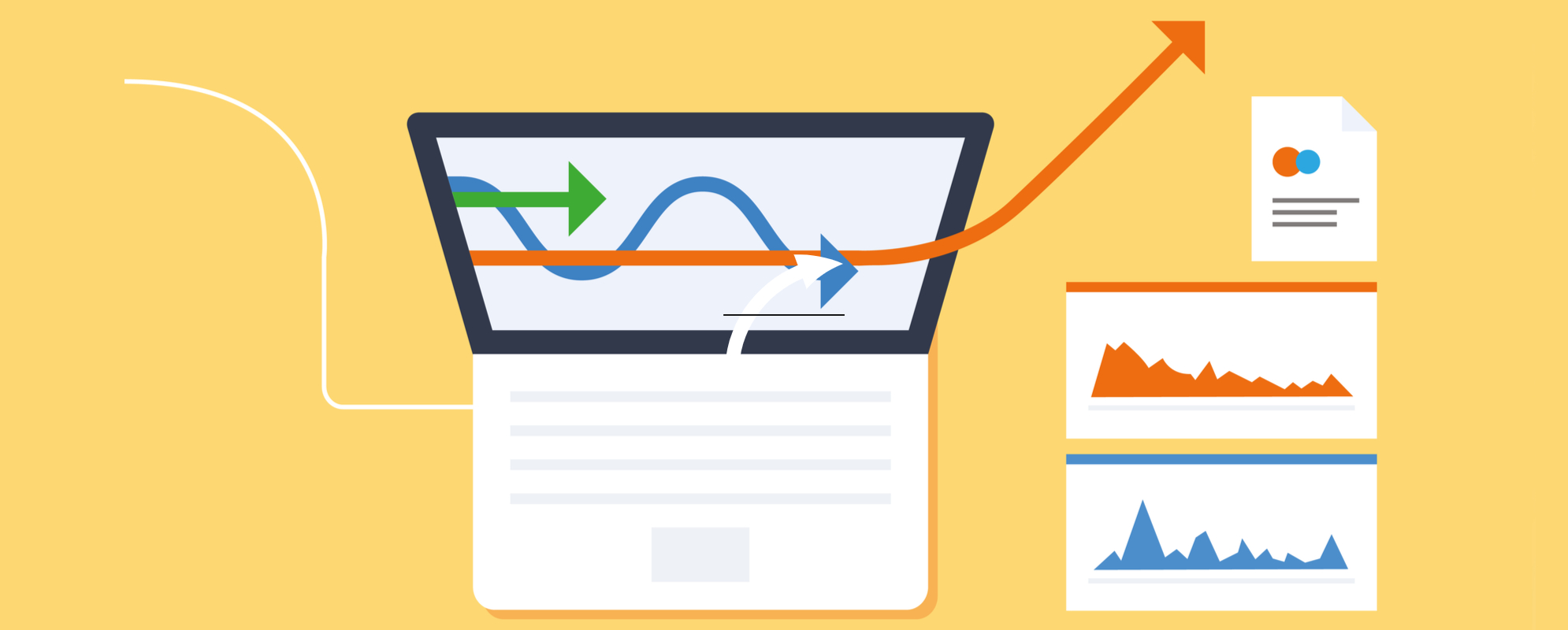
Get weekly
HubSpot updates
As inbound marketing specialists, we like to practice what we preach. In 2018, we reviewed our strengths and weaknesses and decided to reposition ourselves exclusively as a SaaS marketing agency.
It's not that we didn't love flexing our skills and seeing our marketing strategies in action across a broad spectrum of industries. However, by reviewing our position and taking a fresh look at the inbound sales methodology as it applied to our own business, we were able to see that, as a team, we had a lot to offer the SaaS sector. As a result, we decided to make a more concentrated effort in this direction and honed our services to emerge as a specialist in this field.
The big question, of course, is how did that affect our sales strategy? The best person to delve into this subject is, naturally, our Business Development Manager, Ellie. We recently sat down to interview her with the aim of sharing her insights with clients and prospects who may be keen to review their own inbound sales process. In this blog, we'll dissect the key topics we covered with Ellie.
What is the difference between a sales process and an inbound sales strategy?
You could say, a sales process falls in the outbound terminology realm. The focus is on the sale and the sales cycle, not so much on the buyer’s needs. For example, a traditional sales approach would be when a salesperson arrives at a customer's front door or gives them a call (usually, out of the blue), to tell them about a fantastic product they have on offer and convince them that it's absolutely essential for them to purchase it.
You can see the problem here, right?
Your product is never going to appeal to everyone.
We're all individuals with different needs and wants, different purchasing capabilities, and different tastes. It’s the job of marketing specialists to segment and qualify audiences in order to identify those ideal buyers. That's where inbound comes in. Here, the focus is on the customer.
At SpotDev, we create buyer personas to identify who our ideal customers are. Since we're a B2B marketing agency, we focus on the company size, budget, pain points, and challenges that our customers want to solve through marketing. This enables us to create an inbound sales strategy that appeals to their needs and offers solutions, rather than thrusting information on companies that don't align with our offer and may only get agitated by our outreach.
How did SpotDev's inbound sales strategy change?
We learnt from content interactions
With a fresh focus on SaaS, Ellie started to use SpotDev's content as a tool for gathering insight into what our customers needed help with.
"I became more observant of the content that our audience was downloading – eBooks, templates, guides, etc."
By looking at engagement metrics such as the length of time spent watching a video or reading a blog, your sales team will get a preliminary idea of whether the lead is a good fit for your business. This is all part of the research phase that salespeople should engage in to ascertain where their prospect's interests are headed.
We made those ice breaker phone calls
After identifying her leads, Ellie would then reach out with an unscripted call to find out more about her prospect's particular situation. The lead would still be placed in a workflow to receive helpful information and emails from SpotDev's digital marketing experts, but Ellie felt that this was an important touchpoint to help her understand the lead better.
Phone calls are a vital part of most sales initiatives. When conducted in a manner that doesn't overwhelm or put pressure on the recipient, they can be pivotal in establishing successful relationships. The challenge, of course, is to get the targeted individual on the phone.
We used video to get in front of leads
Ellie circumvented the issue of not being able to get leads on the phone by turning to video.
"If I can't get the lead on the phone, they'll get a video via email. There is a much higher response rate to video, even if it's a 'no,' it's usually a 'not right now, but you've made an impression, and I'm storing your details."
Creating a short, personalised video, enabled Ellie to get in front of her leads in a non-intrusive but highly engaging way. She could ask about their challenges, provide some information about the SpotDev team, and invite the lead to call her back.
Essentially, Ellie was optimising her follow-up rate on inbound leads in order to secure a meeting that would eventually turn into a conversion. HubSpot enables sales teams to keep track of the number of attempts they've made at contacting a prospect through telephone, email or other channels to prevent repetitive or unwanted messaging.
Social media for sales
Social media will play a significant role in warming up your leads, but it may not necessarily be the defining factor in whether a sale happens or not. Its effectiveness is largely down to the type of offer you're making. Services with a lengthy and more involved sales cycle like ours require more in-depth engagement.
In the early days, Ellie used social media platforms such as LinkedIn to connect with qualified leads.
"I set out a sequence in HubSpot to message the prospects at set intervals. This had limited success, out of around 200 leads enrolled in this, only a handful either responded or downloaded content from links I shared."
Ellie's observations pointed to the fact that, although her intention to offer help and advice to leads through LinkedIn was genuine, the vast majority of the platform's users had become weary of continuously receiving sales messages, diminishing the efforts of inbound salespeople. As a result, she now uses LinkedIn as a more casual way to connect or keep in touch with prospects who are already entered into a sales funnel or have shown an explicit preference for being contacted through this particular channel.
In summary, the success of our inbound sales comes down to several factors. The first being a dedication to serving our customers, customers who are a good fit for our business and who will truly benefit from our expertise. Our entire sales process if focussed on providing marketing solutions to the questions our leads are asking by paying attention to the content they engage with on our website and media channels.
We've mapped out a buyer's journey that appeals to SaaS companies by addressing their pain points as they move through the awareness, consideration, and decision stages to prevent any friction or frustration when they are contacted by someone on our sales team. We take a conversational sales approach that doesn't bombard the prospect with information. Rather, we study their challenges and present helpful content that is specifically curated for them.
Our efforts are focussed around offering genuine assistance to leads while still being persistent (but not pushy) in our endeavour to drive conversations forward.
"Picking up the phone has proved essential; you can't communicate with a prospect or lead effectively via email – especially not in the early stages. The information gathered during a phone call is priceless, as is the relationship that is built with the interaction," explains Ellie.
Although the last few months have proved to be challenging for most salespeople, sparking quality conversations with prospects and establishing relationships with the intention to pursue those opportunities in the future has proved highly effective, according to Ellie.
"I know I've developed trusted relationships with them [leads], and when they are ready to engage with an agency, it'll be with us."
Would you like to put an inbound sales strategy into practice for your business? Let us help you develop and optimise your sales efforts so that you can start smashing your business growth goals. You can download our free sales tool kit.

